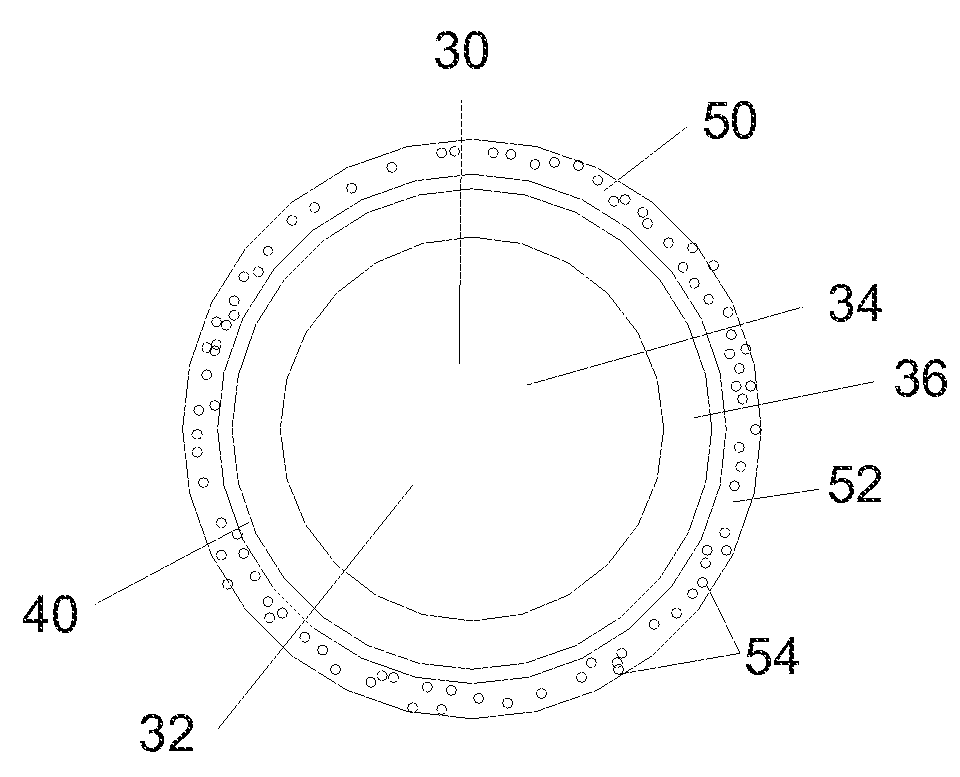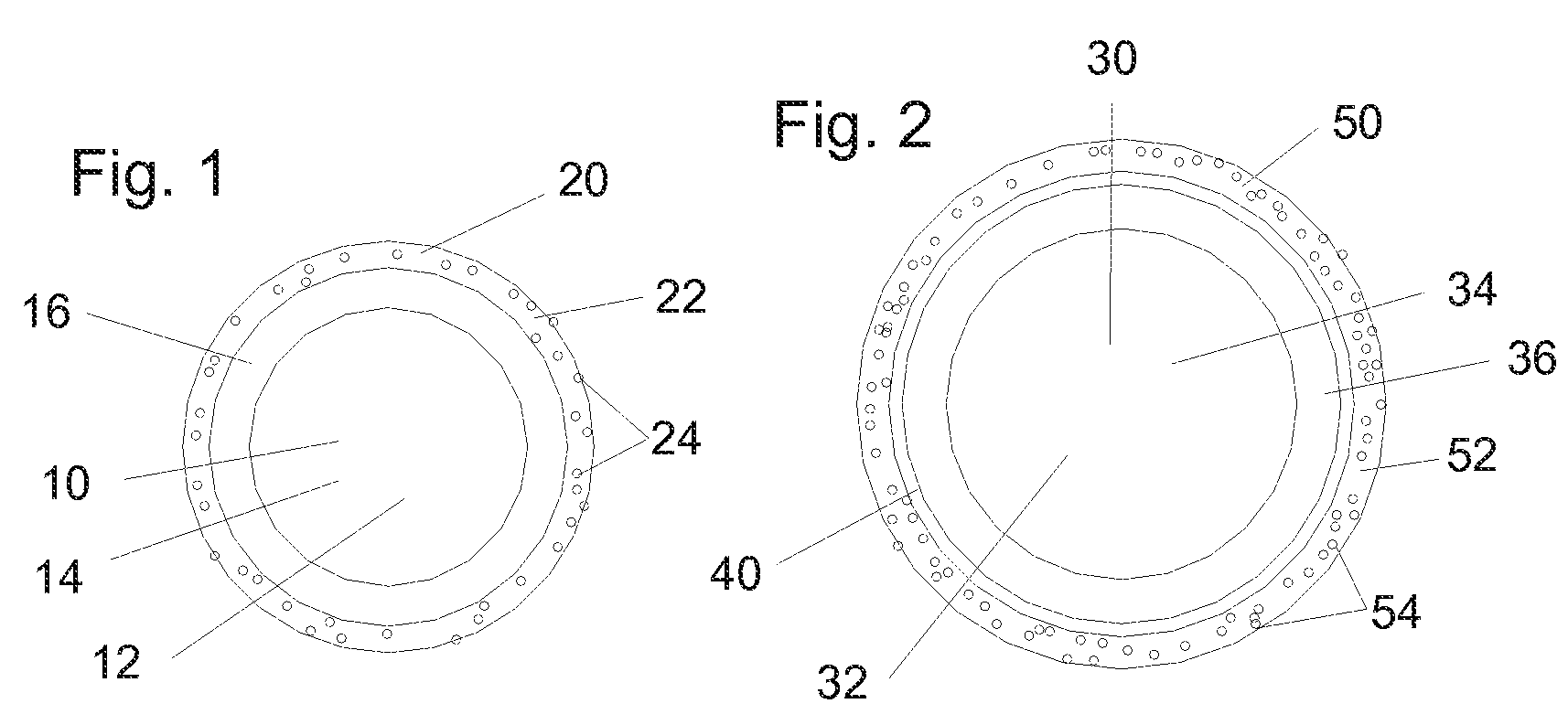Post-functionalized roofing granules, and process for preparing same
a technology of post-functionalization and roofing granules, which is applied in the field of post-functionalized roofing granules and roofing products, can solve the problems of reducing the thermal insulation effectiveness of shingles, unattractive green, brown or black spots on the surface of asphalt shingles of buildings, and reducing the service life of shingles, so as to avoid the cost-effective color matching process that would otherwise be required, and improve the coating coverage and efficiency
- Summary
- Abstract
- Description
- Claims
- Application Information
AI Technical Summary
Benefits of technology
Problems solved by technology
Method used
Image
Examples
example 1
[0057]Commercially available black colored granules (No. 51 black colored granules, CertainTeed Corp., Norwood, Mass.) are used as the starting core materials. A colorless outer coating is applied over these black granules using the conventional coloring process (pan coating). The ingredients of this outer coating include colloidal silica solution (from the hydrolysis of tetraethyl orthosilicate (Sigma-Aldrich Co.) in acidic solution, followed by neutralization in an alkaline medium) containing photocatalytic anatase form of nano titanium oxide (typical particle size of 20 to 50 nm, Millennium Chemical). The coating is subsequently sintered at 400° C. for 30 minutes. Since these nanoparticles and the coating do not alter the original color of the core granules, the resulting granules are black colored granules which possess photocatalytic functionality manufactured using the simple pan coating process. There is only a slight visually perceptible difference in color between the two.
example 2
[0058]Example 1 is repeated, except that the outer layer binder in this case is a clear or transparent polymeric material (polyacrylate). This outer layer is applied onto the black granules via the pan coating process. An organic algaecide is dispersed into the polymeric material to render the composite granules with algaecidal functionality while maintaining the original black color of the granules.
example 3
[0059]Example 2 is repeated, except that the outer layer binder in this case is a transparent polyacrylate applied by a fluidized bed process to the base granules. Solar-reflective nano-titanium dioxide particles are dispersed in the polyacrylate prior to application to the base granules, such that the polymeric outer layer has a solar reflective functionality while the original black color of the granules is maintained.
PUM
| Property | Measurement | Unit |
|---|---|---|
| particle size | aaaaa | aaaaa |
| solar reflectance | aaaaa | aaaaa |
| mean size | aaaaa | aaaaa |
Abstract
Description
Claims
Application Information
 Login to View More
Login to View More - R&D
- Intellectual Property
- Life Sciences
- Materials
- Tech Scout
- Unparalleled Data Quality
- Higher Quality Content
- 60% Fewer Hallucinations
Browse by: Latest US Patents, China's latest patents, Technical Efficacy Thesaurus, Application Domain, Technology Topic, Popular Technical Reports.
© 2025 PatSnap. All rights reserved.Legal|Privacy policy|Modern Slavery Act Transparency Statement|Sitemap|About US| Contact US: help@patsnap.com


